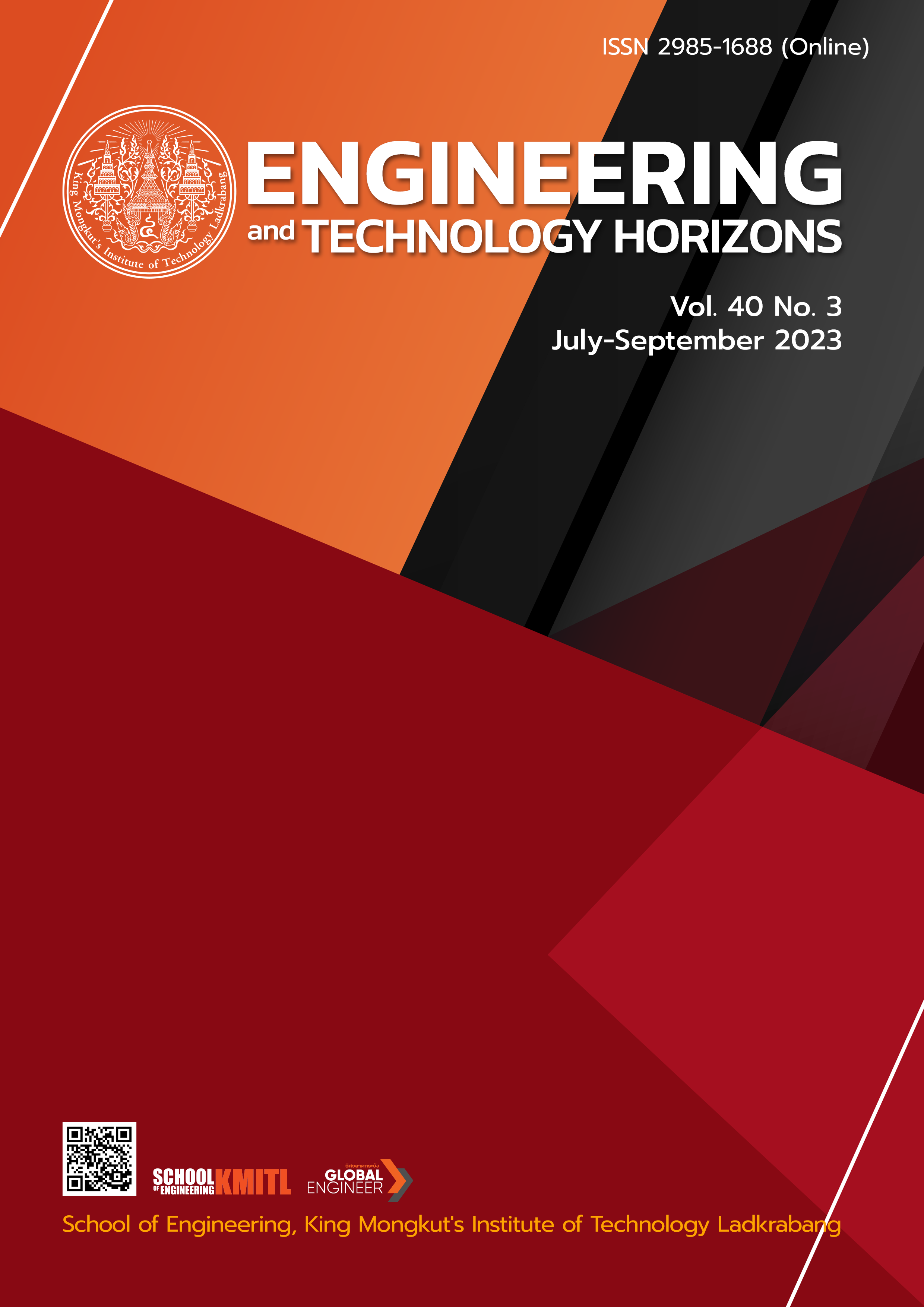Video Relay Service Recording System Using Packet-Capture Multiple Buckets Architecture
Keywords:
Network Monitoring, Packet Capture, SIP Signaling, RTP Protocol, Video Streaming, Packet Capture ArchitectureAbstract
This paper presents a research and development work for the automatic service recording system using network-based monitoring approach. The project is under the cooperation of National Science and Technology Development Agency (NSTDA) and Thai Telecommunication Relay Service (TTRS). The goal is to archive and record video relay services offered to the deaf and hard of hearing community. Using the network-based monitoring approach, we can develop a video recording system that is fully automated and intelligent to analyze different kinds of video relay services. In brief, the system functions to capture network traffic and analyze network packets, signaling, and related protocols such as TCP, UDP, SIP, SDP, RTP, as well as H.264, G.711 encoding. Then, it records the relevant media streams, creates a video file containing the whole video relay service conversation, and send the file to archive in the cloud storage. The benefits include verification in case of appeal, service evaluation, and service improvement. A technical challenge in this system development is how to process real-time interactive multi flows because it must detect and process a large number of call signaling and media streams that occur as interactive real time. The optimization is vital so that the system can swiftly do the processing in time, without causing the buffer overflow problem that can degrade the recording quality. In this regard, we developed a novel methodology for processing PCAP (Packet Capture) called Multiple Buckets Architecture. Our test results showed that it can significantly reduce the probability of buffer overflow, making the processing more efficient when compared to the traditional processing of single bucket.
References
S. McCanne and V. Jasobson, “The BSD Packet Filter: A New Architecture for User-level Packet Capture,” in Proc. USENIX Winter 1993 Technical Conference, San Diego, CA, USA, Jan. 25–29, 1993, pp. 259–269.
TCPDUMP & LiBPCAP, The Tcpdump Group, 2010. [Online]. Available: https://www.tcpdump.org
N. Bonelli, F. D. Vigna, S. Giordano and G. Procissi, “Packet Fan-Out Extension for the pcap Library,” IEEE Transactions on Network and Service Management, vol. 15, no. 3, 2018, pp. 976–990, doi: 10.1109/TNSM.2018.2828939.
J. F. Zazo, M. Forconesi, S. Lopez-Buedo, G. Sutter and J. Aracil, “TNT10G: A High - Accuracy 10 GbE Traffic Player and Recorder for Multi-Terabyte Traces,” in International Conference on ReConFigurable Computing and FPGAs, Cancun, Mexico, Dec. 8–10, 2014, pp. 1-6, doi: 10.1109/ReConFig.2014.7032561.
V. Duarte and N. Farruca, “Using libPcap for Monitoring Distributed Applications,” in International Conference on High Performance Computing & Simulation, Caen, France, Jun. 28–2, 2010, pp. 92–97, doi: 10.1109/HPCS.2010.5547144.
J. Liu, F. Wang, S. Zhao, X. Wang, and S. Chen, “iMonitor, An APP-Level Traffic Monitoring and Labeling System for iOS Devices,” in IEEE International Conference on Computational Science and Engineering (CSE) and IEEE International Conference on Embedded and Ubiquitous Computing (EUC), New York, NY, USA, Aug. 1–3, 2019, pp. 211–218, doi: 10.1109/CSE/EUC.2019.00048.
WinPcap, Riverbed Technology, 2018. [Online]. Available: https://www.winpcap.org
Win10Pcap, Daiyuu Nobori, Computer Science, University of Tsukuba, 2022. [Online]. Available: https://www.win10pcap.org
Npcap: Windows Packet Capture Library & Driver, Insecure.Com, 2021. [Online]. Available: https://nmap.org/npcap
P. Orosz and T. Skopko, “Software-based Packet Capturing with High Precision Timestamping for Linux,” in International Conference on Systems and Networks Communications, Nice, France, Aug. 22–27, 2010, pp. 381–386, doi: 10.1109/ICSNC.2010.65.
SIP: Session Initiation Protocol, RFC3261, J. Rosenberg, H. Schulzrinne, G. Camarillo, A. Johnston, J. Peterson, R. Sparks, M. Handley and E. Schooler, Jun. 2002. [Online]. Available: https://www.ietf.org/rfc/rfc3261.txt
SDP: Session Description Protocol, RFC4566, M. Handley, V. Jacobson and C. Perkins, Jul. 2006. [Online]. Available: https://www.ietf.org/rfc/rfc4566.txt
RTP: A Transport Protocol for Real-Time Applications, RFC3550, H. Schulzrinne, S. Casner, R. Frederick and V. Jacobson, Jul. 2003. [Online]. Available: https://www.ietf.org/rfc/rfc3550.txt
RTP Payload Format for H.264 Video, RFC6184, Y.-K. Wang, R. Even, T. Kristensen and R. Jesup, May. 2011. [Online]. Available: https://www.ietf.org/rfc/rfc6184.txt
RTP Payload Format for Scalable Video Coding, RFC6190, S. Wenger, Y.-K. Wang, T. Schierl and A. Eleftheriadis, May. 2011. [Online]. Available: https://www.ietf.org/rfc/rfc6190.txt
RTP Payload Format for G.711, RFC7655, M. Ramalho, Ed. P. Jones, N. Harada, M. Perumal and L. Miao, Nov. 2015. [Online]. Available: https://www.ietf.org/rfc/rfc7655.txt
RTP Profile for Audio and Video Conferences with Minimal Control, RFC3551, H. Schulzrinne and S. Casner, Jul. 2003. [Online]. Available: https://www.ietf.org/rfc/rfc3551.txt
Real-time Transport Protocol (RTP) Payload for Comfort Noise (CN), RFC3389, R. Zopf, Sep. 2002. [Online]. Available: https://www.ietf.org/rfc/rfc3389.txt
Telepoint “FFmpeg.” ffmpeg.org https://www.ffmpeg.org (accessed Jul. 18, 2023).
Downloads
Published
How to Cite
Issue
Section
License
Copyright (c) 2023 Faculty of Engineering, King Mongkut’s Institute of Technology Ladkrabang

This work is licensed under a Creative Commons Attribution-NonCommercial-NoDerivatives 4.0 International License.
The published articles are copyrighted by the School of Engineering, King Mongkut's Institute of Technology Ladkrabang.
The statements contained in each article in this academic journal are the personal opinions of each author and are not related to King Mongkut's Institute of Technology Ladkrabang and other faculty members in the institute.
Responsibility for all elements of each article belongs to each author; If there are any mistakes, each author is solely responsible for his own articles.






